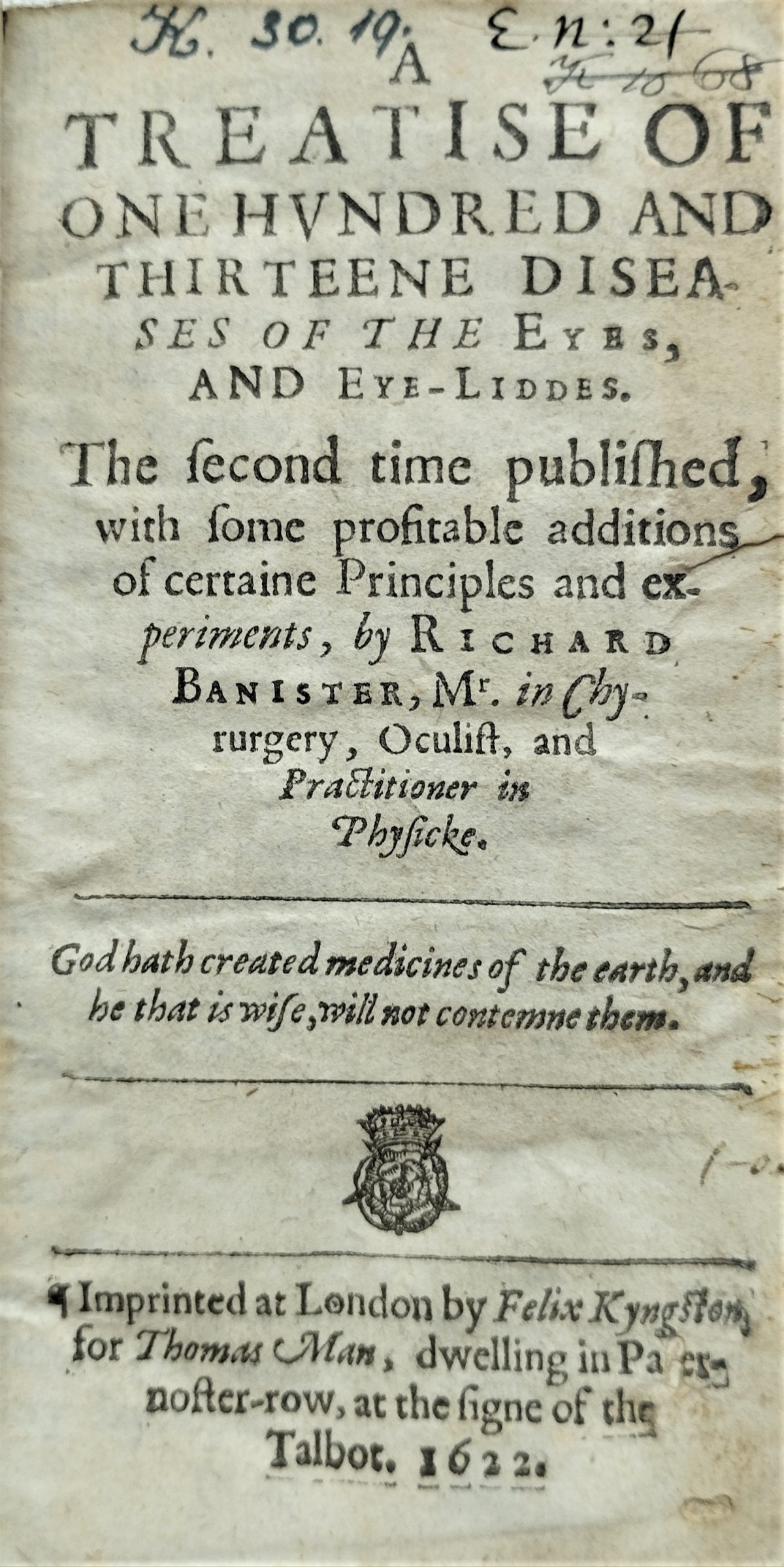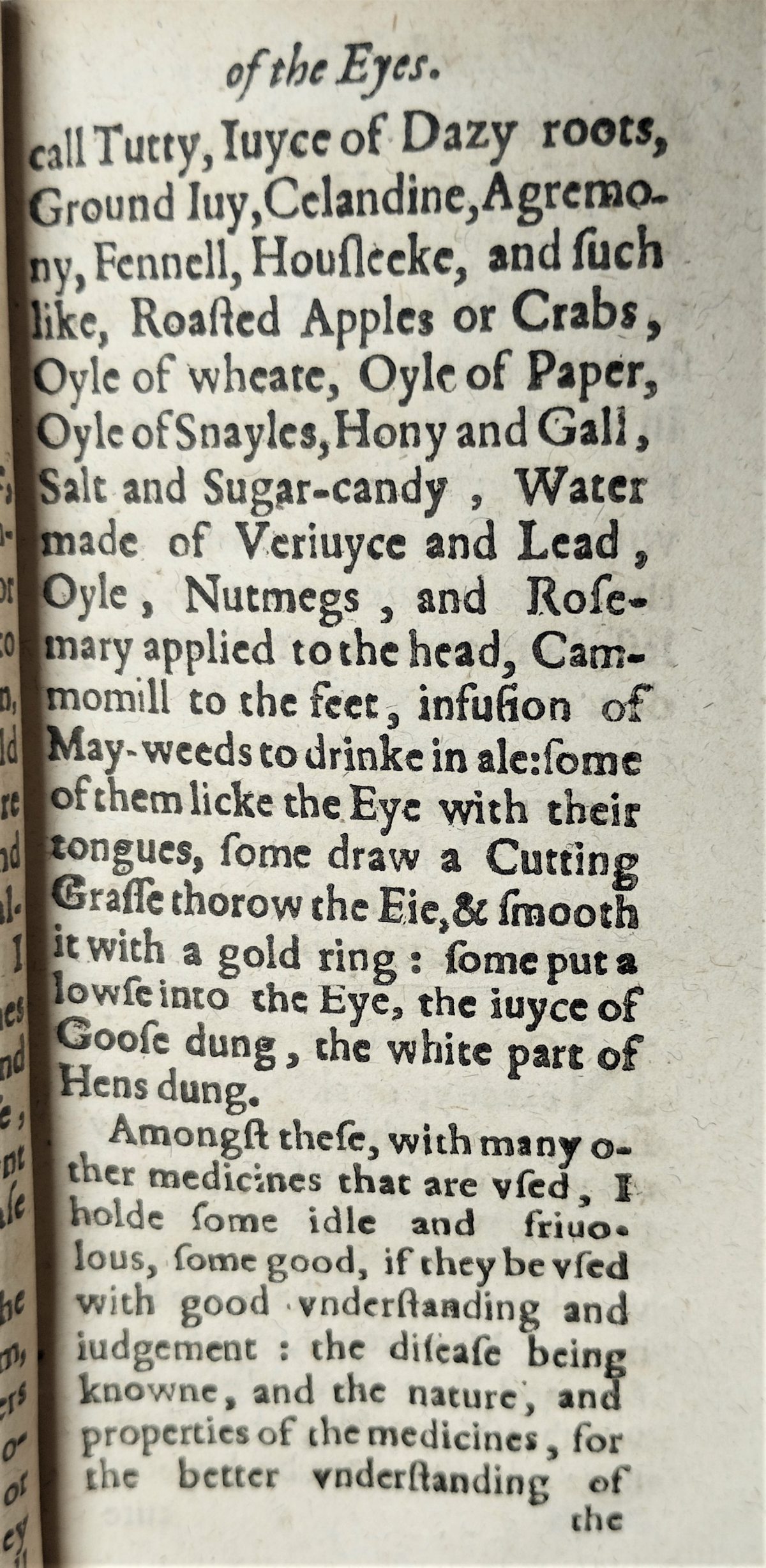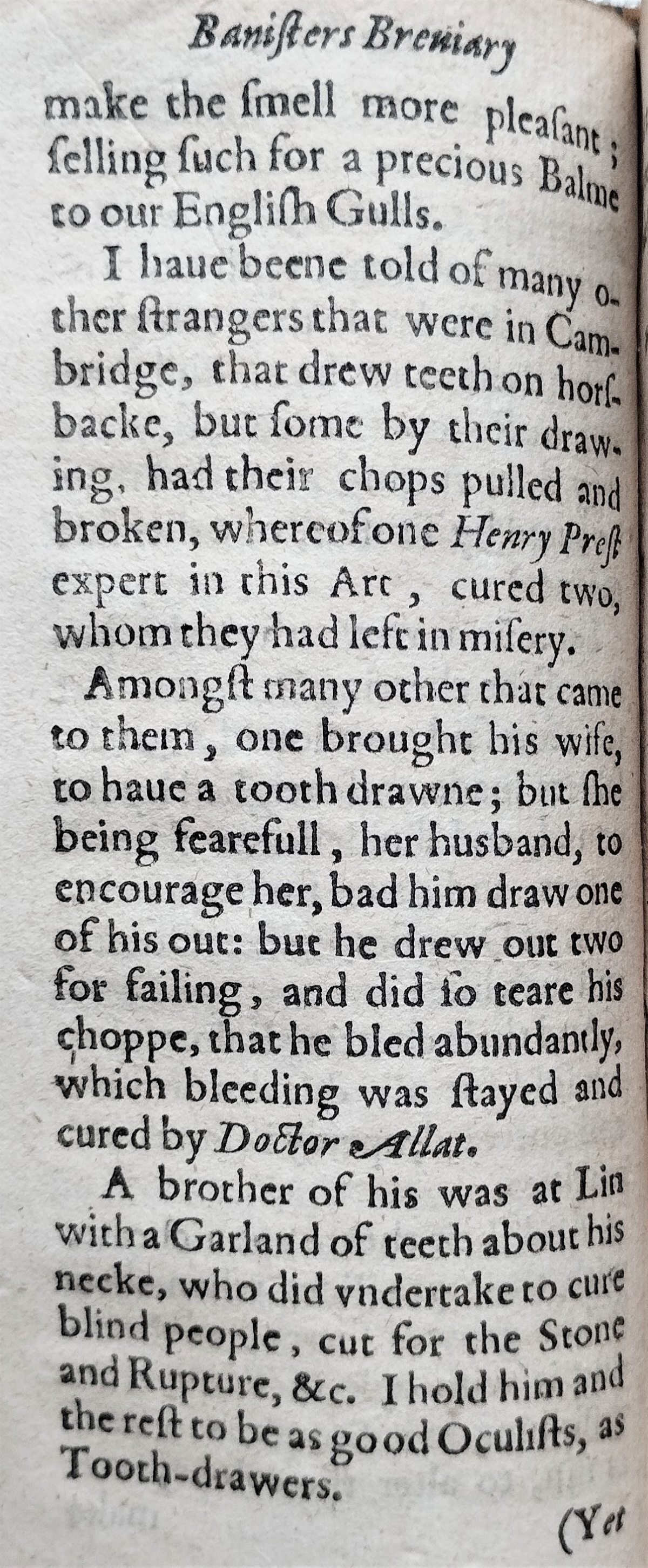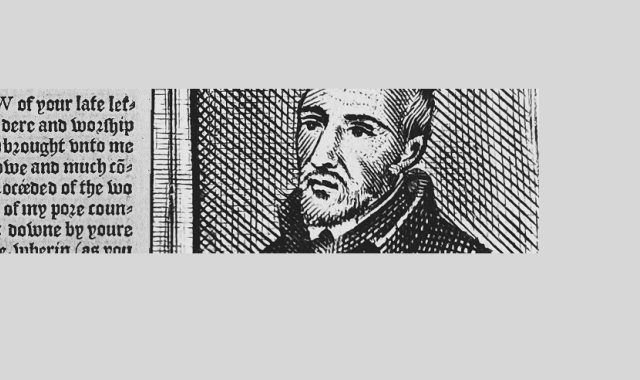Against the quacks
Banister's Breviary of the Eyes, by Richard Banister. Printed in London by Felix Kyngston for Thomas Man, 1622. Lower Library, K.30.19
Richard Banister (c. 1570–1626) studied surgery under his uncle John Banister, an anatomist and surgeon who attended Edward VI in his final illness. He trained in couching cataracts (one of the oldest surgical procedures, with abysmal outcomes and low successful rate) and practised mainly in Lincolnshire, travelling to other towns when requested. He recognized hardness of the eye as a sign of glaucoma, anticipating by over two centuries William McKenzie, who re-discovered it only in 1830.
In this essay, preceding a reprint of an English translation of the Traité des maladies de l'oeil qui sont en nombre de cent treize by Jacques Guillemeau,1 originally published in Paris in 1585, Banister denounces unqualified practitioners and warns the reader of their methods and scams. In the chapter ‘Errours amongst Many that Practice for the Eyes’ he lists a series of remedies that are of no use at all, like: applying on the injured eye snail’s oil or juice of goose and hen’s dung; eating roasted apples or salt and sugar-candy; applying nutmeg and rosemary to the head or camomile to the feet.
The city of Cambridge is mentioned here as the place where a quack doctor advertised his skills as oculist and dentist, specifically tooth removal by horse-back. As easily imagined, he was witnessed by many dislocating or breaking the jaws of the unfortunate customers who trusted him. Banister wrote about them: ‘I hold him and the rest to be as good oculists, as tooth-drawers’.
In a time where quackery was prevalent Banister was an honest itinerant oculist, a careful observer who left us a unique account of the practice of ophthalmology in England in the early 17th century. Banister died in 1626 and was buried at St Mary's churchyard in Stamford. He had been a benefactor of the church, having built a public library in the south choir to which he donated books, including the writings of Galen and others on medicine and surgery; he left an additional sum in his will for the continued increase and maintenance of the library.2
The former owner of this copy of Banister’s breviary was William Lyng, of Gonville & Caius, Vicar of St. Vigor's Church in Fulbourn from 1672 to 1719.
In the gallery you can see the pages relative to the many unproven remedies and the quack doctor in Cambridge.
On fever and golden eggs << Against the quacks >> John Case, quack doctor
- M. Victoria Domínguez-Rodríguez and Ayoze N. González-Hernández, ‘Jacques Guillemeau’s 16th-Century Account of Ophthalmoplegia’, JAMA Ophthalmology 131, no. 7 (2013): 933–6.
- Emilie Savage-Smith, ‘Banister, Richard (c. 1570–1626), Oculist’, Oxford Dictionary of National Biography, 23 September 2004.






